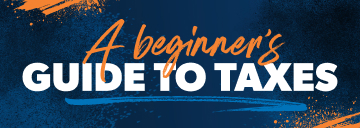What You Need to Know for Tax Season 2025
If tax season is your favorite time of the year . . . who are you? For the rest of us, it can be hard to keep track of everything as Tax Day approaches (including when Tax Day is).
So, let’s cover all the important stuff you’ll need to know to file your taxes right and on time.
Tax Deadlines and Key Dates
Here are a few of the dates to circle on your calendar this tax season:
- Late January 2025: Tax season begins. And we’re off! This is when the IRS officially starts accepting and processing tax returns for 2024.
- January 31, 2025: Due date for employers to send W-2 forms. Check your mailbox and your emails, because you’ll be getting your W-2 from your job around this date. This is also the day when 1099 forms are sent to independent contractors, freelance workers and people with other forms of miscellaneous income—things like interest, dividends and prize winnings.
- April 15, 2025: Tax Day. For all of you procrastinators out there, this is the last day to file your federal tax return and make any tax payments you owe. It’s also the last day to request a six-month extension if you can’t file your return by Tax Day.
- October 15, 2025: Tax return extension deadline. If you choose to file an extension request on your tax return, this is the due date for filing your tax return.
Higher Standard Deduction in 2024
When you pay taxes, you can either take the standard deduction or itemize your deductions (calculate your deductions one by one). We’ll dive more into how to make that call later, but the standard deduction is the easier choice because it lowers the amount of income you’re taxed on by a specific dollar amount.
For tax year 2024, the standard deduction went up slightly to adjust for inflation:
Standard Deduction for 2024
|
Filing Status |
Standard Deduction |
|
Single |
$14,600 |
|
Married Filing Jointly |
$29,200 |
|
Married Filing Separately |
$14,600 |
|
Head of Household |
$21,9002 |
Tax Checklist
Whether you’re filing with a tax pro this season or doing it on your own with tax software like Ramsey SmartTax, you’ll need the right information in front of you. That way, you can file correctly and find places where you can qualify for credits and deductions to lower your tax bill. Here are some of the basics:
- Identification information for you and your dependents: You’ll need date of birth info and either a Social Security number or individual taxpayer identification number (ITIN) for each person on your tax return.
- A copy of your most recent tax return: Having a copy of last year’s return can give you an idea of what deductions and tax credits you qualify for and save some time in the process.
- Income statements and tax forms: Gather your W-2 from your employer and all those 1099 forms you might receive for freelance work, interest income and other types of taxable income. You’ll need copies of those tax forms to file your taxes.
- Proof of expenses: Planning to itemize your deductions this year? Then you’ll need receipts and other documents on hand to prove those expenses. It helps to keep track of that paperwork as you go!
If you want a cheat sheet you can go back to during tax season, we’ve got you covered! The Tax Prep Checklist will help you gather all the necessary documents and choose the right deductions for your specific situation.

